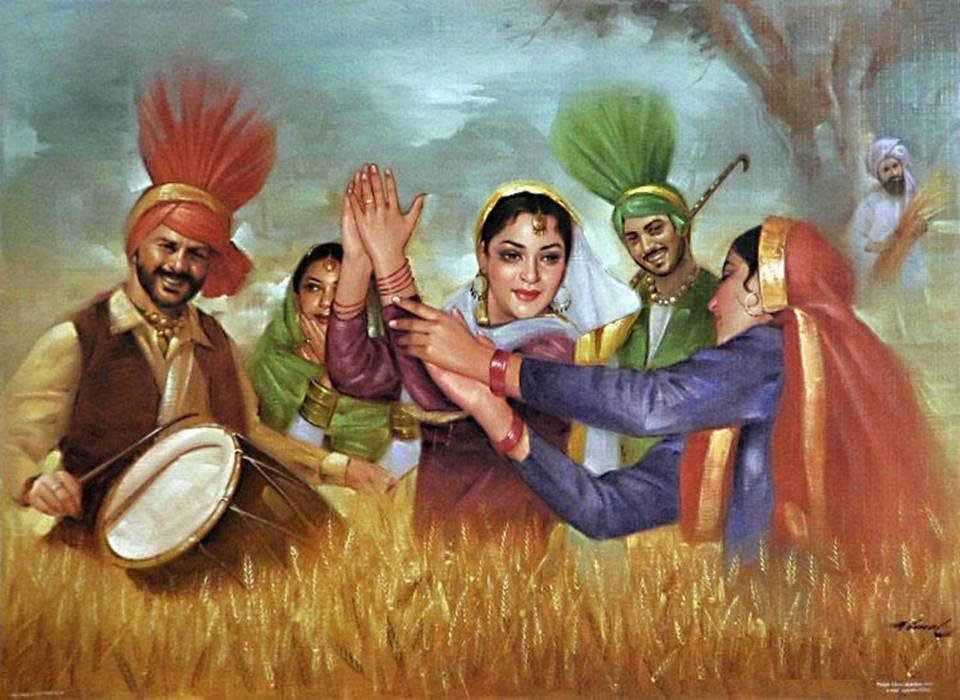We’ll look at the Hanjra Jatts, a large Jat tribe who live primarily in the Gujranwala Bar. The name is also spelled Hanjrah and Hinjra on occasion.
Origin
J. H Morris, the author of the first Gujranwala Settlement Report (1860), says the following about Hanjra Jatts:
“one of the aboriginal tribes of this part of the country; were settled here centuries ago, when more than half of the district was peopled by them. Have gradually become extinct, so that at present they only possess 43 villages, chiefly in Gujranwala and Hafizabad Tehsil”
Other tribes in the Gujranwala region generally acknowledge the Hanjra were present when the British arrived, a point picked up by the British. The 1874 report’s author, R.P Nisbett, added the following about Hanjra Jatts:
“This is one of the aboriginal tribes of this district; they claim descent from Hinjrah, whose son Lakat 25 generations ago came from Hindustan, and settling in the district founded a city called Uskhab, the ruins of which near Kalu Tarar still exist; he married the daughter of one Raichand, with whom he lived for some years. Subsequently he returned to his native country in Hindustan; leaving his wife and his son Mal a growing youth, behind him. Mal on arriving a years of discretion, set out in search of his father, and found him; at the same time discovering several new relations in the person of eight half-brothers, sons of his father by his second wife. Mal and his brothers did not agree, so the former returned to his mother in this district; and founded a village called Mandiala Mallanwala, the ruins of which are close to Dohatah Azmat. Presently a brother named Dhol arrived from Hindustan; he was heartily welcomed by Ma, who gave him land; and from these two brothers this tribe has spread till they occupy 37 villages. There are nine sub-divisions named after Mal and his eight half-brothers.”
Also read: A short history of Chatha Jutts
The British ethnologist H. A Rose wrote writing in the beginning of the 20th Century said the following about Hanjra Jatts:
“an important tribe, indigenous to the Gujranwala Bar. Once a pastoral tribe, perhaps of aboriginal extraction, they own 37 villages in Gujranwala which is their home, but have spread both east and west under the hills. They claim to be Saroha Rajputs by origin arid say that their ancestor Hinjraon came from the neighbourhood of Hisar to the Hafizabad parqana in Gujranwala and founded a city called Uskhab, the ruins of which still exist. Their immediate ancestors were Mai and Dhol and they say that half their clans still live in the Hisar country.”‘
Rose is correct that many Hanjra or Hinjroan Pacchada continued to live in Sirsa (part of Hisar District at the time) until partition in 1947. Hanjra, according to this account, was a Saroya Rajput. In his book The Jats of Punjab, Ghulam Akbar Malik refers to their ancestors as Hanjar Rao, a Saroya Rajput.
However, there is another tradition among the Hanjra that their ancestor was Raja Jagnath, the younger son of Raja Giyal and the conqueror of Makhiala. Raja Giyal was the son of Raja Mal, the ruler of Malot in Chakwal and a descendant of Delhi’s Raja Dalip.
The Hanjra were originally settled in Muzaffargarh, where many of them still live. The majority, however, have settled in Gujranwala, near the town of Ghakkar Mandi. They were pastoralists until the early nineteenth century when the Sikh rulers began to settle the Gujranwala Bar tribes.
Other folk traditions among the Hanjra credit their ancestor Hinjraon, a Saroya Rajput who moved to Hafizabad from the vicinity of Hisar in what is now Haryana and founded a city called Uskhab, the ruins of which still exist.
Mal and Dhol were their direct ancestors. Interestingly, the Hinjroan were a clan of the Pacchada, a Muslim ethnic community found primarily in the semi-arid country that now comprises parts of the Haryana and Rajasthan districts of Sirsa, Hissar, and Ganganagar.
The Pacchada, a corruption of the Punjabi word paschim da, or literally “someone from the west,” are a group of Muslim Rajput tribes, along with the Bhagsanke and Sukhera, who were once the effective rulers of Sirsa country.
This would support Rose’s theory that the Hanjra’s original home was in Sirsa country, from which groups moved west and north, eventually settling in the Gujranwala Bar. Another thing to keep in mind is that the Hinjroan are entirely Muslim, whereas some Hanjra groups are Sikh and others are Muslim.
The Bhatti Rajputs of Pindi Bhattian have a tradition of seeking refuge with Maghro Hanjra when they first arrive in the Gujranwala Bar. The Lodike of Hafizabad also claimed that the Hanjra were already present in the area when they arrived. This demonstrates that they were among the first tribes to settle in the Bar.
Distribution
The Hanjra now own 37 villages in the Gujranwala Division (mainly in Hafizabad District) which is their home, but have spread both east and west, with a significant collection of Hanjra villages in Bhakkar, Layyah, and Muzaffargarh districts. In Bhakkar District, Wadhaywala near Maibail Sharif is an important village.
